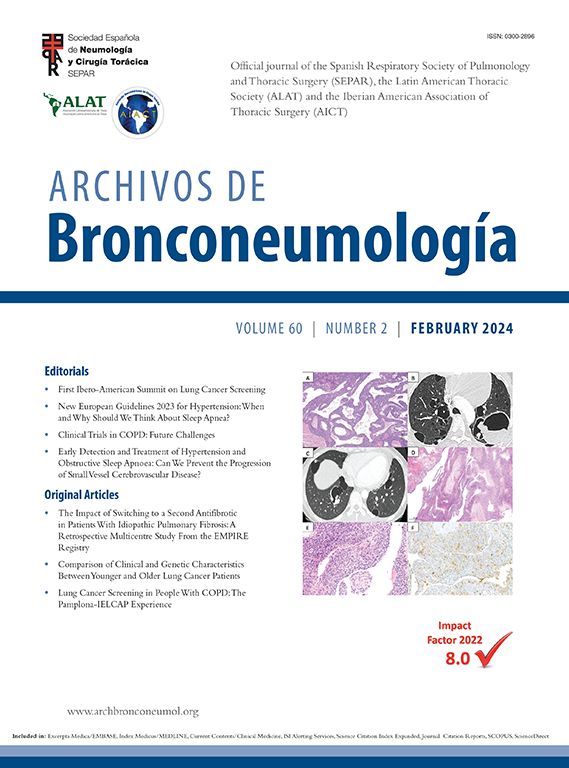Characterization of Inactive COPD Patients: Barriers to Physical Activity and Perceived Impact of Inactivity
IF 9.2
3区 医学
Q1 RESPIRATORY SYSTEM
引用次数: 0
Abstract
Backcround
Chronic obstructive pulmonary disease (COPD) is characterized by high morbidity and mortality, with physical inactivity being a major contributor to poor outcomes. This study aims to identify subgroups of inactive COPD patients by analyzing reported barriers to physical activity and the perceived impact of inactivity on their disease.
Methods
In 91 consecutive stable COPD patients, physical activity was measured using a SenseWear armband and the SAQ-COPD questionnaire, to define inactivity as a physical activity level <1.69. Clinical and functional assessment included measurement of lung volumes, diffusing capacity, muscle strength, six-minute walk test and progressive cardiorespiratory exercise test. Cluster analysis was performed based on patients’ responses to the profile and impact sections of SAQ-COPD questionnaire.
Results
In 70 inactive COPD patients, three distinct clusters were identified: Cluster 1 showed significant functional limitations, particularly dyspnea and leg fatigue, alongside worse exercise tolerance and dynamic hyperinflation. Cluster 2 displayed few functional limitations but reported a lack of interest in physical activity as the primary reason for inactivity, with poorer sleep quality observed. Cluster 3 exhibited a high perceived impact of inactivity despite reporting fewer physical limitations, with psychological factors such as fear and discouragement acting as primary barriers. Factor analysis revealed two principal components: perceived impact of inactivity and limiting factors for exercise.
Conclusion
These findings highlight the heterogeneity among inactive COPD patients and emphasize the need for tailored interventions targeting both physical and psychological barriers. SAQ-COPD questionnaire may be a useful instrument for this individualized assessment of inactive COPD patients.

不活动COPD患者的特征:身体活动障碍和不活动的感知影响。
背景:慢性阻塞性肺疾病(COPD)的特点是高发病率和死亡率,缺乏身体活动是导致预后不良的主要因素。本研究旨在通过分析报告的身体活动障碍和不活动对其疾病的感知影响来确定非活动性COPD患者的亚组。方法:使用SenseWear臂环和SAQ-COPD问卷测量91例连续稳定期COPD患者的身体活动,将不活动定义为身体活动水平。结果:在70例非活动性COPD患者中,确定了三种不同的类型:第一类患者表现出明显的功能限制,特别是呼吸困难和腿部疲劳,同时运动耐受性差和动态恶性膨胀。第2组显示出很少的功能限制,但缺乏对体育活动的兴趣是不活动的主要原因,观察到睡眠质量较差。尽管报告的身体限制较少,但第3组表现出高度感知的不活动影响,心理因素(如恐惧和沮丧)是主要障碍。因子分析揭示了两个主要因素:缺乏运动的感知影响和运动的限制因素。结论:这些发现突出了非活动性COPD患者的异质性,并强调了针对生理和心理障碍进行量身定制干预的必要性。SAQ-COPD问卷可能是对非活动性COPD患者进行个体化评估的有用工具。
本文章由计算机程序翻译,如有差异,请以英文原文为准。
求助全文
约1分钟内获得全文
求助全文
来源期刊

Archivos De Bronconeumologia
Medicine-Pulmonary and Respiratory Medicine
CiteScore
3.50
自引率
17.50%
发文量
330
审稿时长
14 days
期刊介绍:
Archivos de Bronconeumologia is a scientific journal that specializes in publishing prospective original research articles focusing on various aspects of respiratory diseases, including epidemiology, pathophysiology, clinical practice, surgery, and basic investigation. Additionally, the journal features other types of articles such as reviews, editorials, special articles of interest to the society and editorial board, scientific letters, letters to the editor, and clinical images. Published monthly, the journal comprises 12 regular issues along with occasional supplements containing articles from different sections.
All manuscripts submitted to the journal undergo rigorous evaluation by the editors and are subjected to expert peer review. The editorial team, led by the Editor and/or an Associate Editor, manages the peer-review process. Archivos de Bronconeumologia is published monthly in English, facilitating broad dissemination of the latest research findings in the field.
 求助内容:
求助内容: 应助结果提醒方式:
应助结果提醒方式:


